Abstract
A decade of research on home- and community-based long-term care shows that few of the assumptions behind expectations of tis potential cost-effectiveness were warranted. Few who use home- and community-based long-term care would otherwise have been long-stayers in nursing homes. Long-stayers tend to be older, sicker, more dependent, and poorer in social resources than those who use community care. Fewer still who use community care actually have their institutional stay averted or shortened by its use, even if they are at risk. But more effective targeting on those most likely to be institutionalized may lead to high screening costs and small, inefficient programs, because few patients in the community fit the profile for high risk of institutionalization. Conversely, the very sickest and most dependent patients may be cheaper to serve in a nursing home than in the community. Patient outcome benefits have also been limited: except for the higher contentment levels found in some studies, community care appears to produce no special outcome benefits in longevity, physical or mental functioning, or social activity levels. Nonetheless, community care serves a sick, dependent, and--most people would agree--deserving population of patients and their caretakers. A refocusing of public policy to target specifically on the functionally dependent rather than the aged per se may be the best hope for public support for community care.
Full text
PDF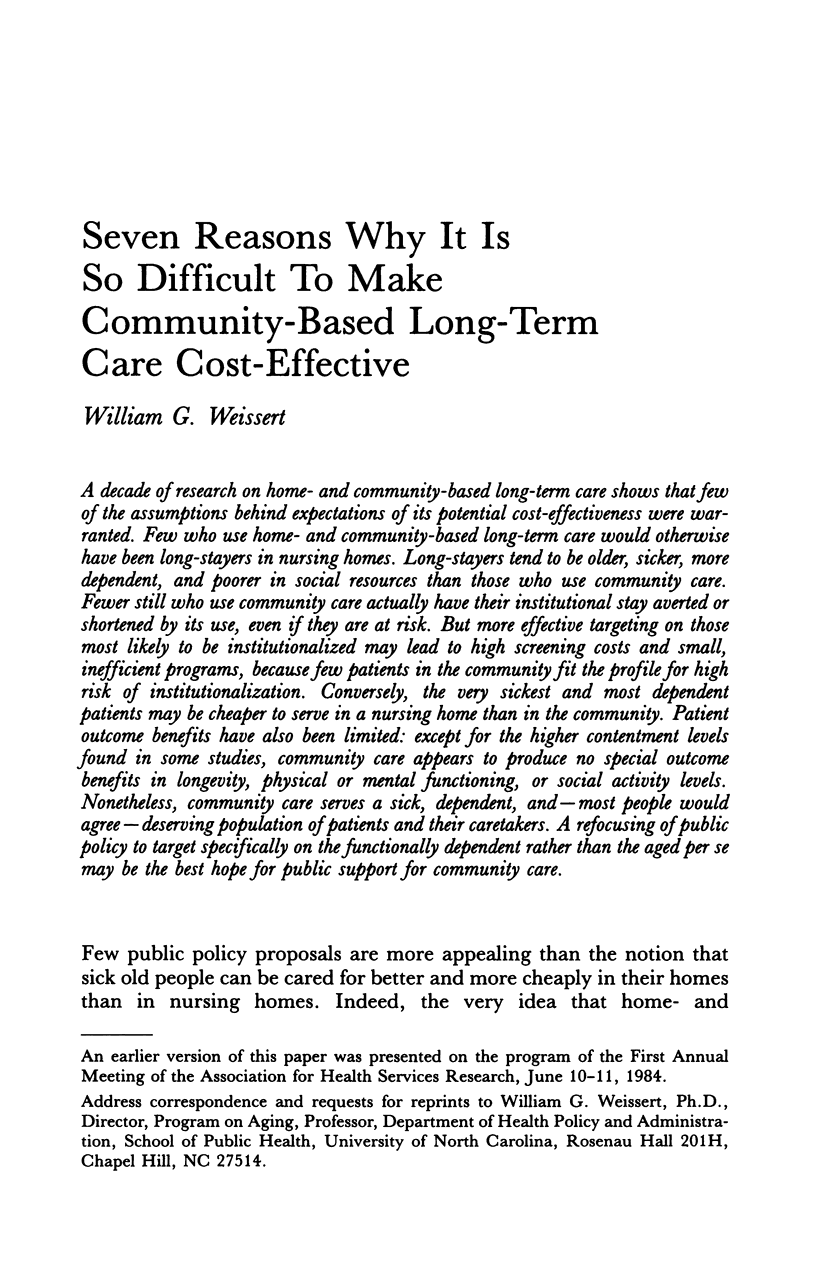
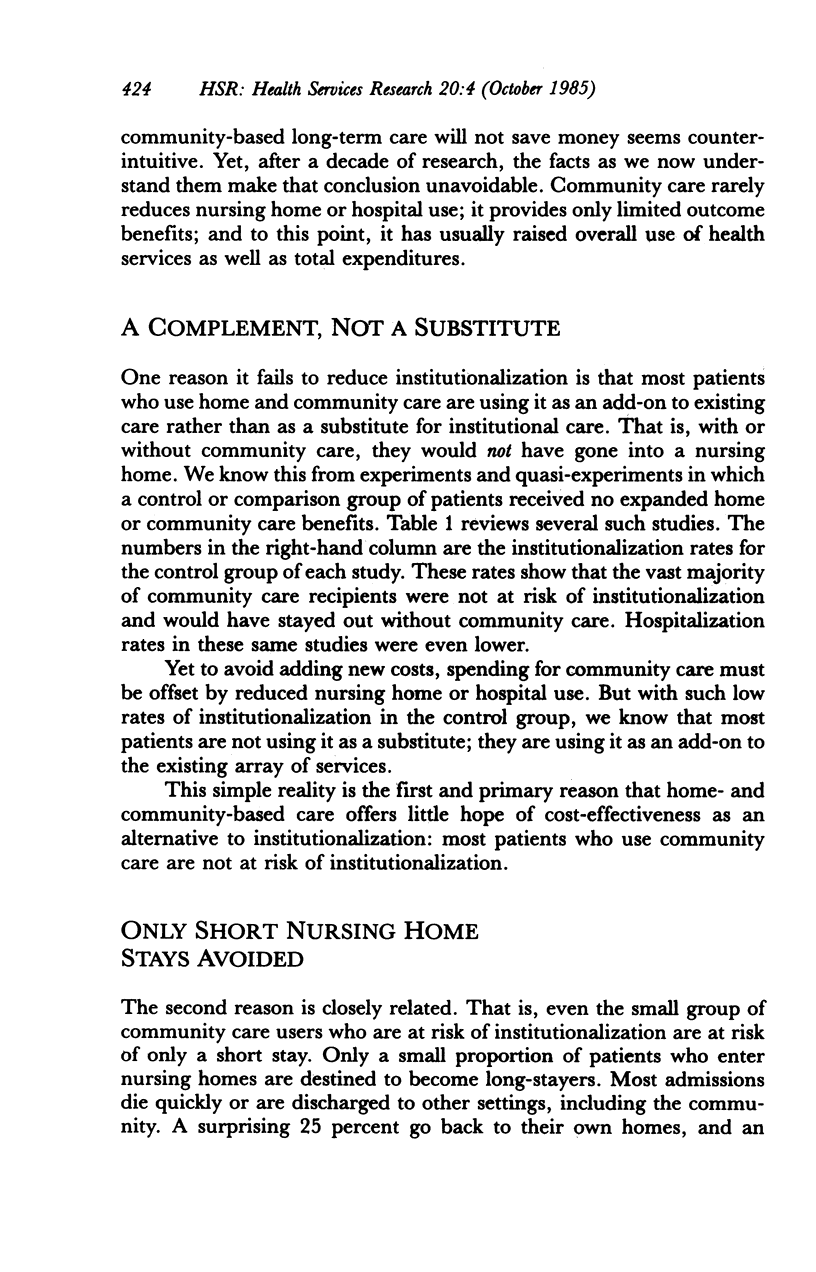

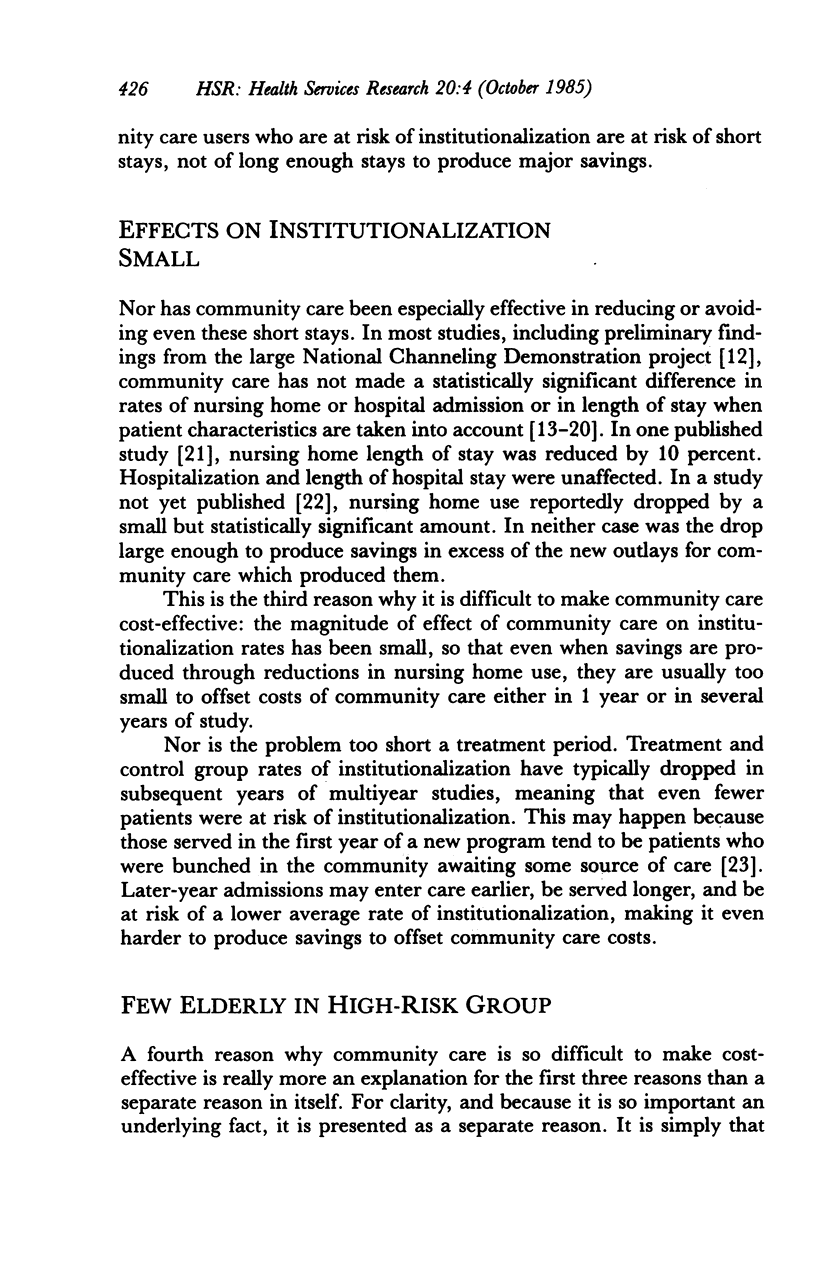
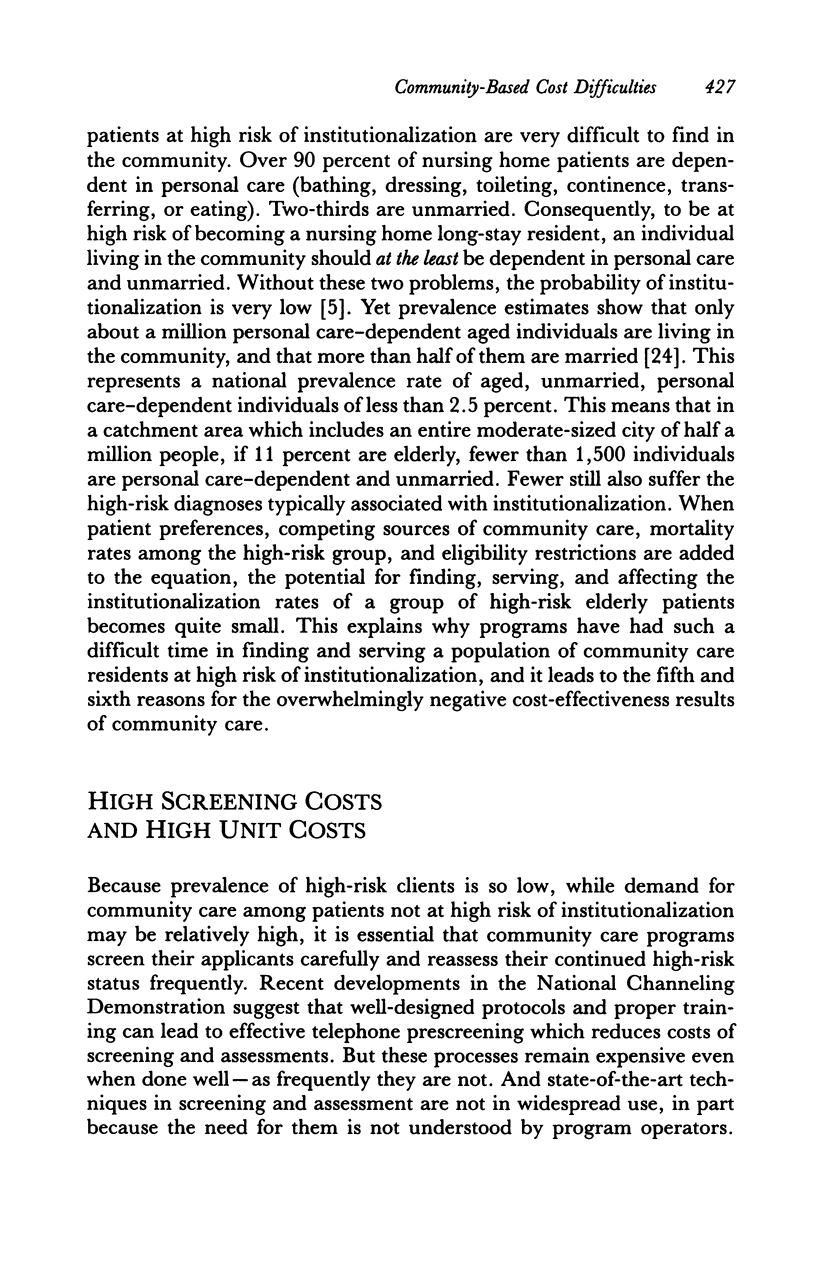
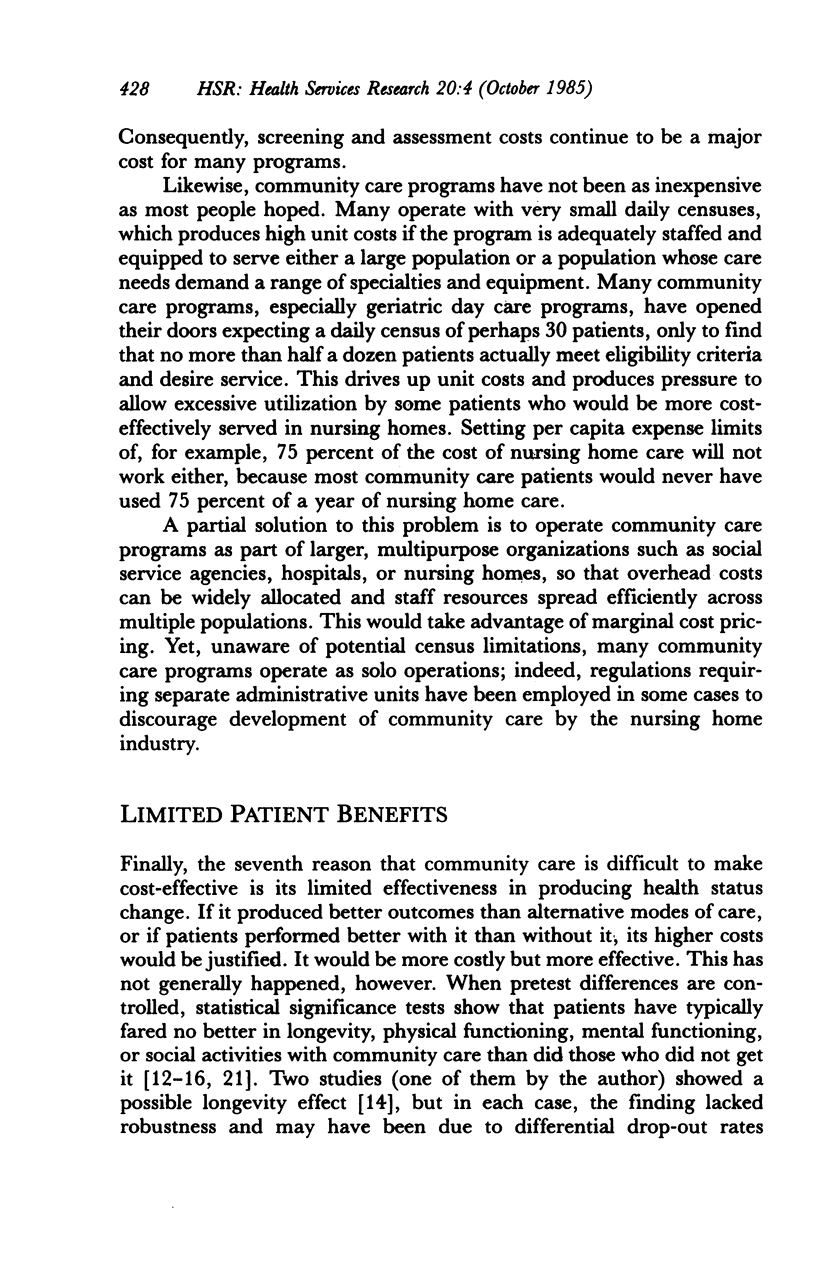
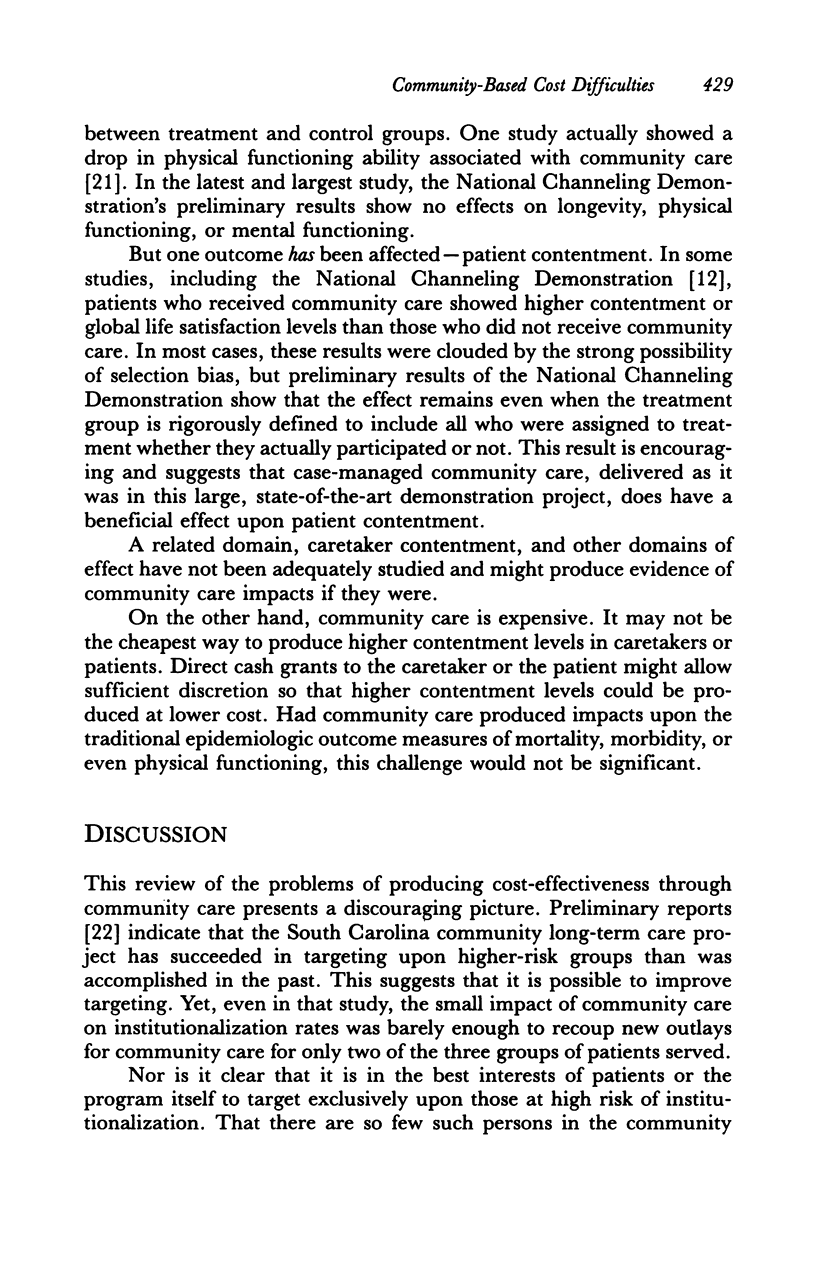
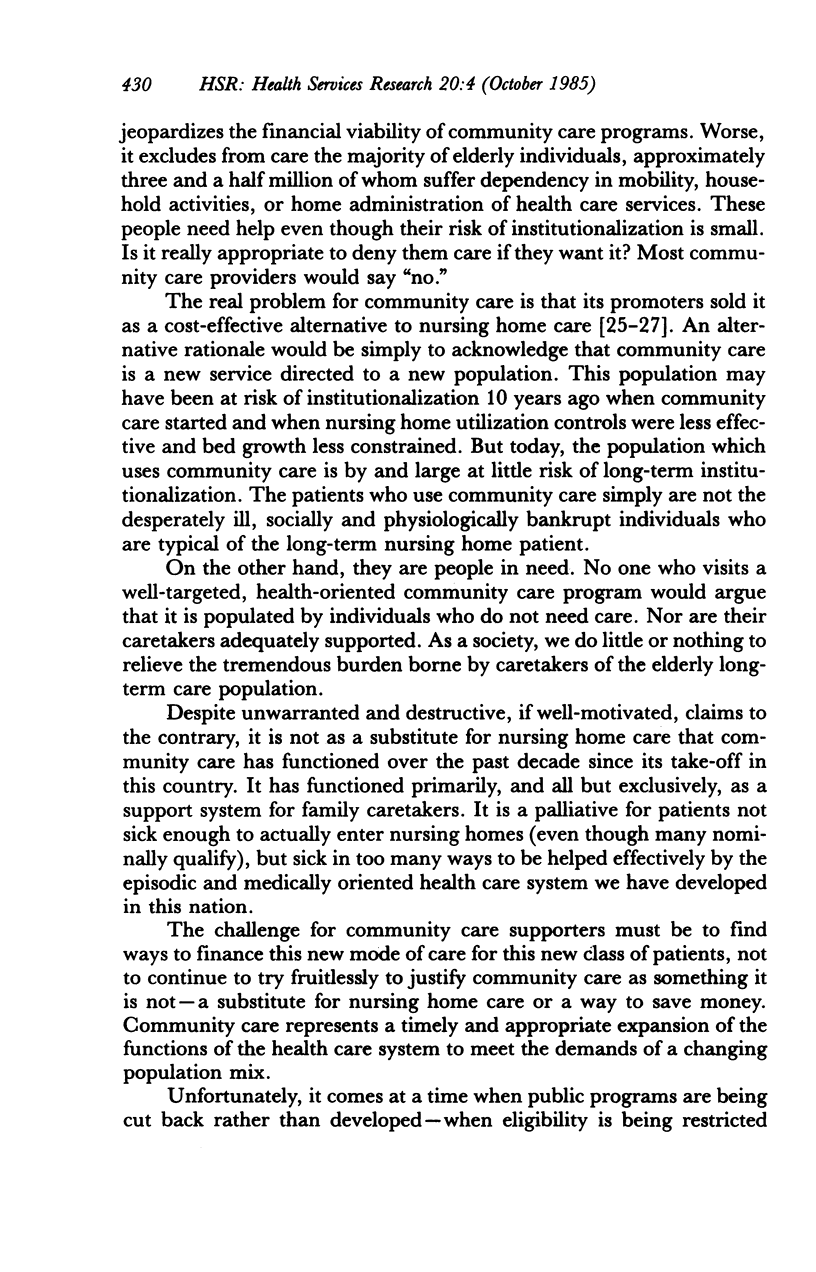
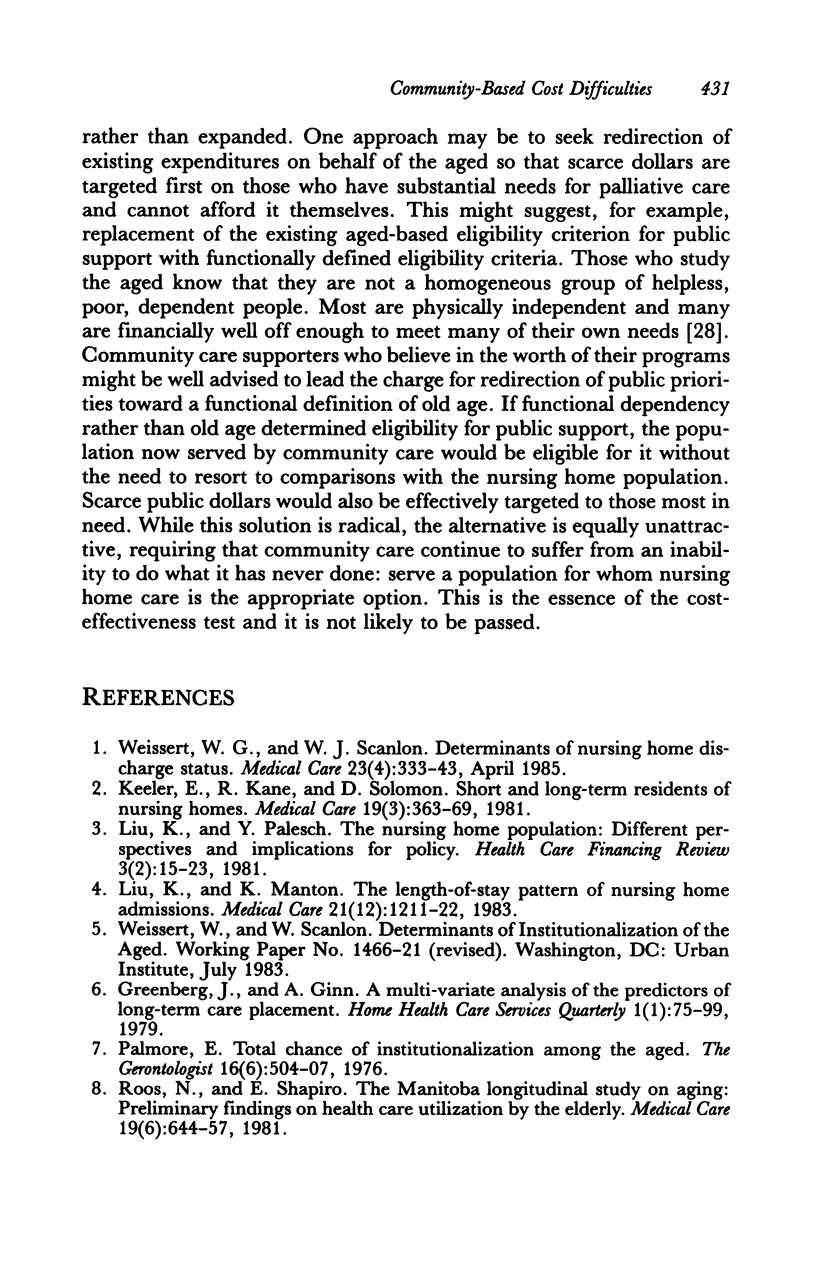
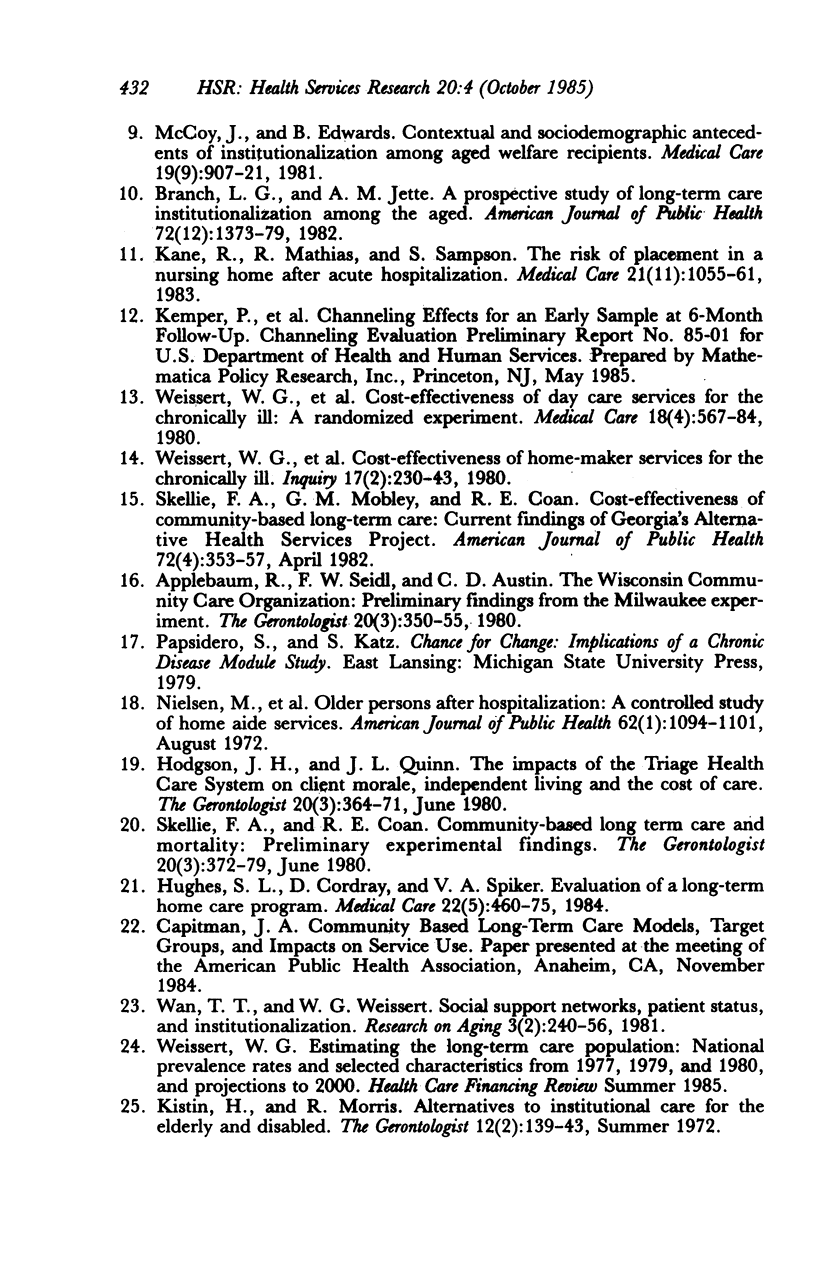
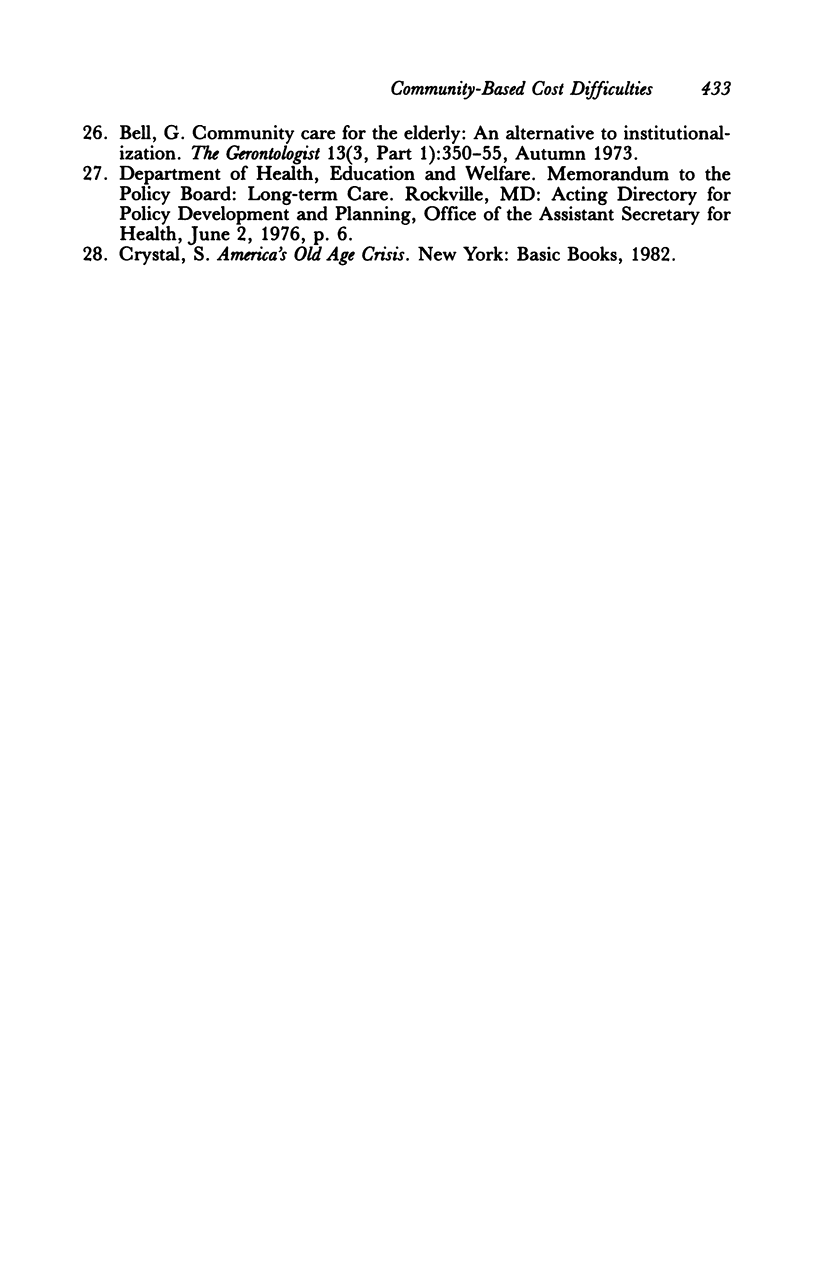
Selected References
These references are in PubMed. This may not be the complete list of references from this article.
- Applebaum R., Seidl F. W., Austin C. D. The Wisconsin community care organization: preliminary findings from the Milwaukee experiment. Gerontologist. 1980 Jun;20(3 Pt 1):350–355. doi: 10.1093/geront/20.3_part_1.350. [DOI] [PubMed] [Google Scholar]
- Branch L. G., Jette A. M. A prospective study of long-term care institutionalization among the aged. Am J Public Health. 1982 Dec;72(12):1373–1379. doi: 10.2105/ajph.72.12.1373. [DOI] [PMC free article] [PubMed] [Google Scholar]
- Greenberg J. N., Ginn A. A multivariate analysis of the predictors of long-term care placement. Home Health Care Serv Q. 1979 Spring;1(1):75–99. doi: 10.1300/J027v01n01_04. [DOI] [PubMed] [Google Scholar]
- Hodgson J. H., Jr, Quinn J. L. The impact of the Triage health care delivery system upon client morale, independent living and the cost of care. Gerontologist. 1980 Jun;20(3 Pt 1):364–371. doi: 10.1093/geront/20.3_part_1.364. [DOI] [PubMed] [Google Scholar]
- Hughes S. L., Cordray D. S., Spiker V. A. Evaluation of a long-term home care program. Med Care. 1984 May;22(5):460–475. doi: 10.1097/00005650-198405000-00010. [DOI] [PubMed] [Google Scholar]
- Kane R. L., Matthias R., Sampson S. The risk of placement in a nursing home after acute hospitalization. Med Care. 1983 Nov;21(11):1055–1061. doi: 10.1097/00005650-198311000-00002. [DOI] [PubMed] [Google Scholar]
- Keeler E. B., Kane R. L., Solomon D. H. Short- and long-term residents of nursing homes. Med Care. 1981 Mar;19(3):363–370. doi: 10.1097/00005650-198103000-00011. [DOI] [PubMed] [Google Scholar]
- Kistin H., Morris R. Alternatives to institutional care for the elderly and disabled. Gerontologist. 1972 Summer;12(2):139–142. doi: 10.1093/geront/12.2_part_1.139. [DOI] [PubMed] [Google Scholar]
- Liu K., Manton K. G. The length-of-stay pattern of nursing home admissions. Med Care. 1983 Dec;21(12):1211–1222. doi: 10.1097/00005650-198312000-00008. [DOI] [PubMed] [Google Scholar]
- Liu K., Palesch Y. The nursing home population: different perspectives and implications for policy. Health Care Financ Rev. 1981 Dec;3(2):15–23. [PMC free article] [PubMed] [Google Scholar]
- McCoy J. L., Edwards B. E. Contextual and sociodemographic antecedents of institutionalization among aged welfare recipients. Med Care. 1981 Sep;19(9):907–921. doi: 10.1097/00005650-198109000-00003. [DOI] [PubMed] [Google Scholar]
- Nielsen M., Blenkner M., Bloom M., Downs T., Beggs H. Older persons after hospitalization: a controlled study of home aide service. Am J Public Health. 1972 Aug;62(8):1094–1101. doi: 10.2105/ajph.62.8.1094. [DOI] [PMC free article] [PubMed] [Google Scholar]
- Palmore E. Total chance of institutionalization among the aged. Gerontologist. 1976 Dec;16(6):504–507. doi: 10.1093/geront/16.6.504. [DOI] [PubMed] [Google Scholar]
- Roos N. P., Shapiro E. The Manitoba longitudinal study on aging: preliminary findings on health care utilization by the elderly. Med Care. 1981 Jun;19(6):644–657. doi: 10.1097/00005650-198106000-00007. [DOI] [PubMed] [Google Scholar]
- Skellie F. A., Coan R. E. Community-based long-term care and mortality: preliminary findings of Georgia's alternative health services project. Gerontologist. 1980 Jun;20(3 Pt 1):372–379. doi: 10.1093/geront/20.3_part_1.372. [DOI] [PubMed] [Google Scholar]
- Skellie F. A., Mobley G. M., Coan R. E. Cost-effectiveness of community-based long-term care: current findings of Georgia's alternative health services project. Am J Public Health. 1982 Apr;72(4):353–358. doi: 10.2105/ajph.72.4.353. [DOI] [PMC free article] [PubMed] [Google Scholar]
- Weissert W. C., Scanlon W. J. Determinants of nursing home discharge status. Med Care. 1985 Apr;23(4):333–343. doi: 10.1097/00005650-198504000-00005. [DOI] [PubMed] [Google Scholar]
- Weissert W. G., Wan T. T., Livieratos B. B., Pellegrino J. Cost-effectiveness of homemaker services for the chronically ill. Inquiry. 1980 Fall;17(3):230–243. [PubMed] [Google Scholar]
- Weissert W., Wan T., Livieratos B., Katz S. Effects and costs of day-care services for the chronically ill: a randomized experiment. Med Care. 1980 Jun;18(6):567–584. doi: 10.1097/00005650-198006000-00001. [DOI] [PubMed] [Google Scholar]


